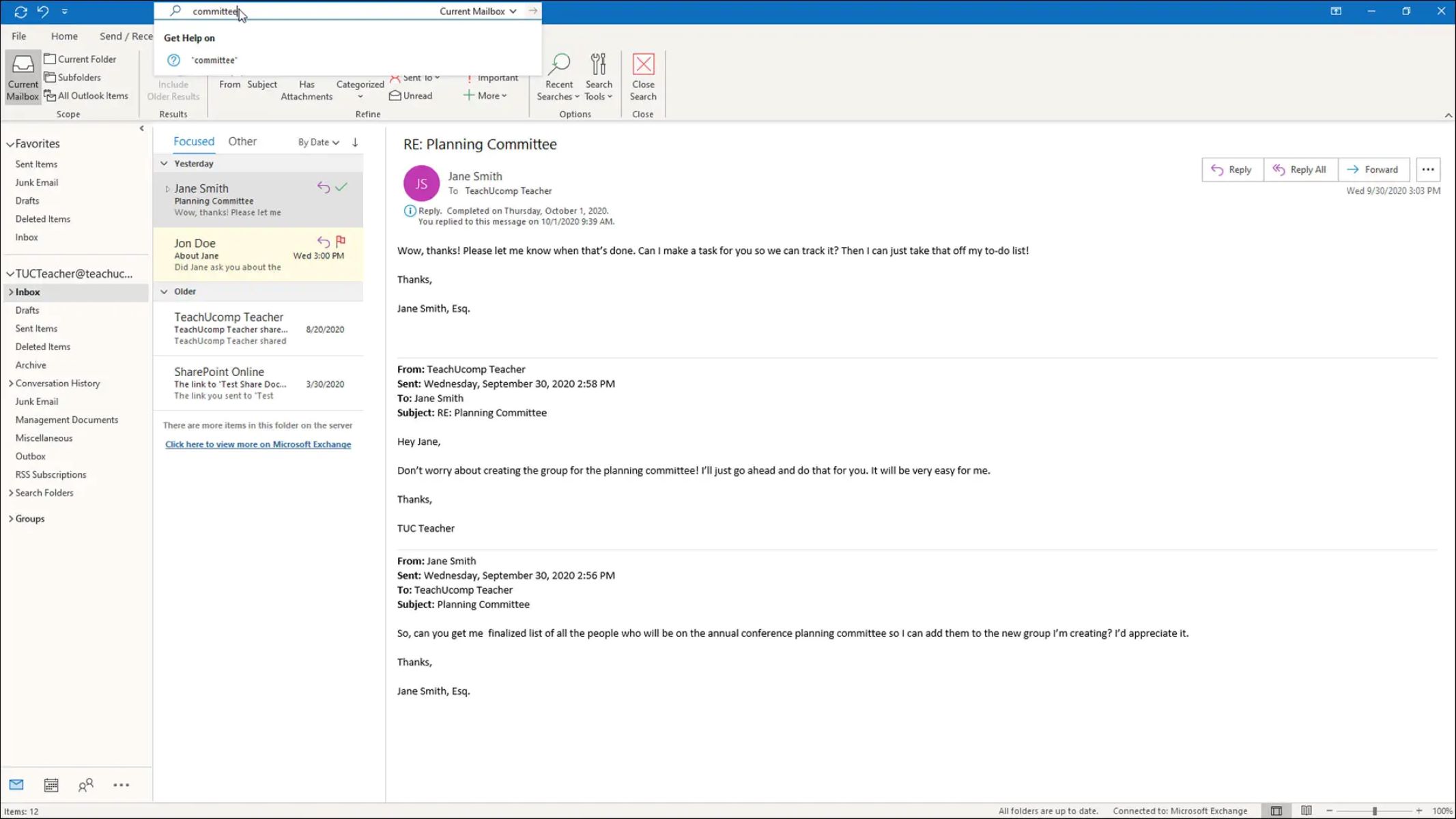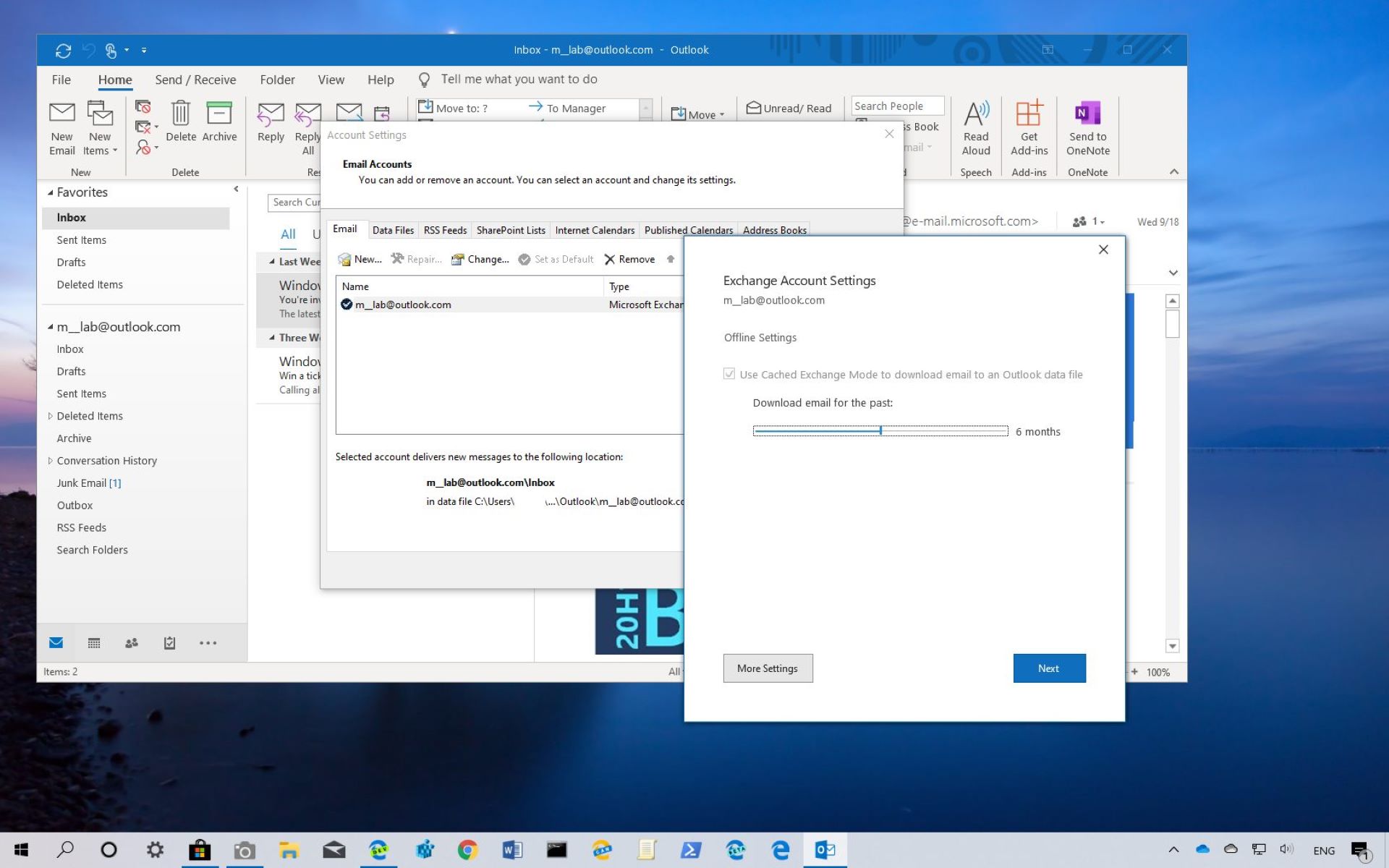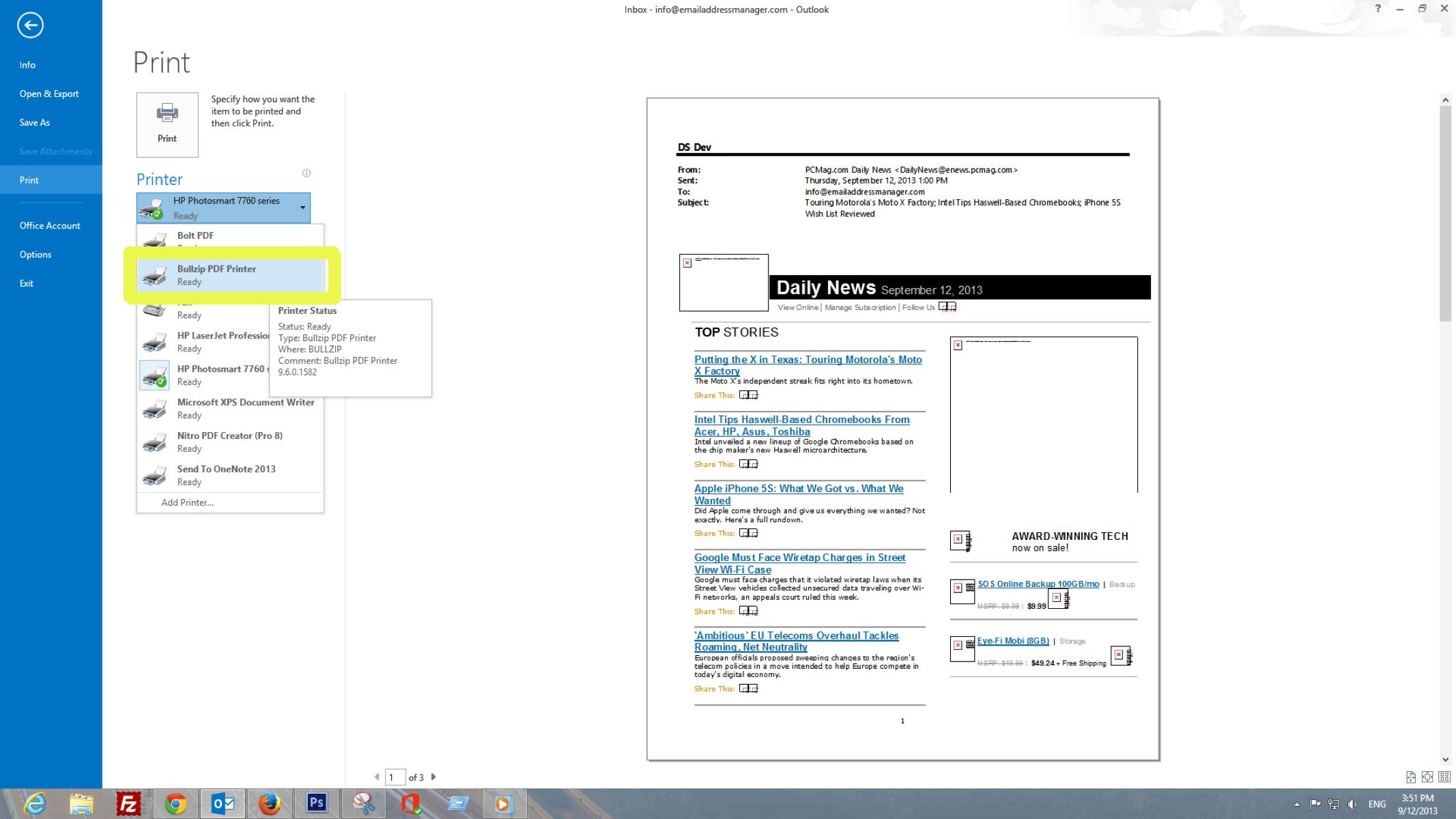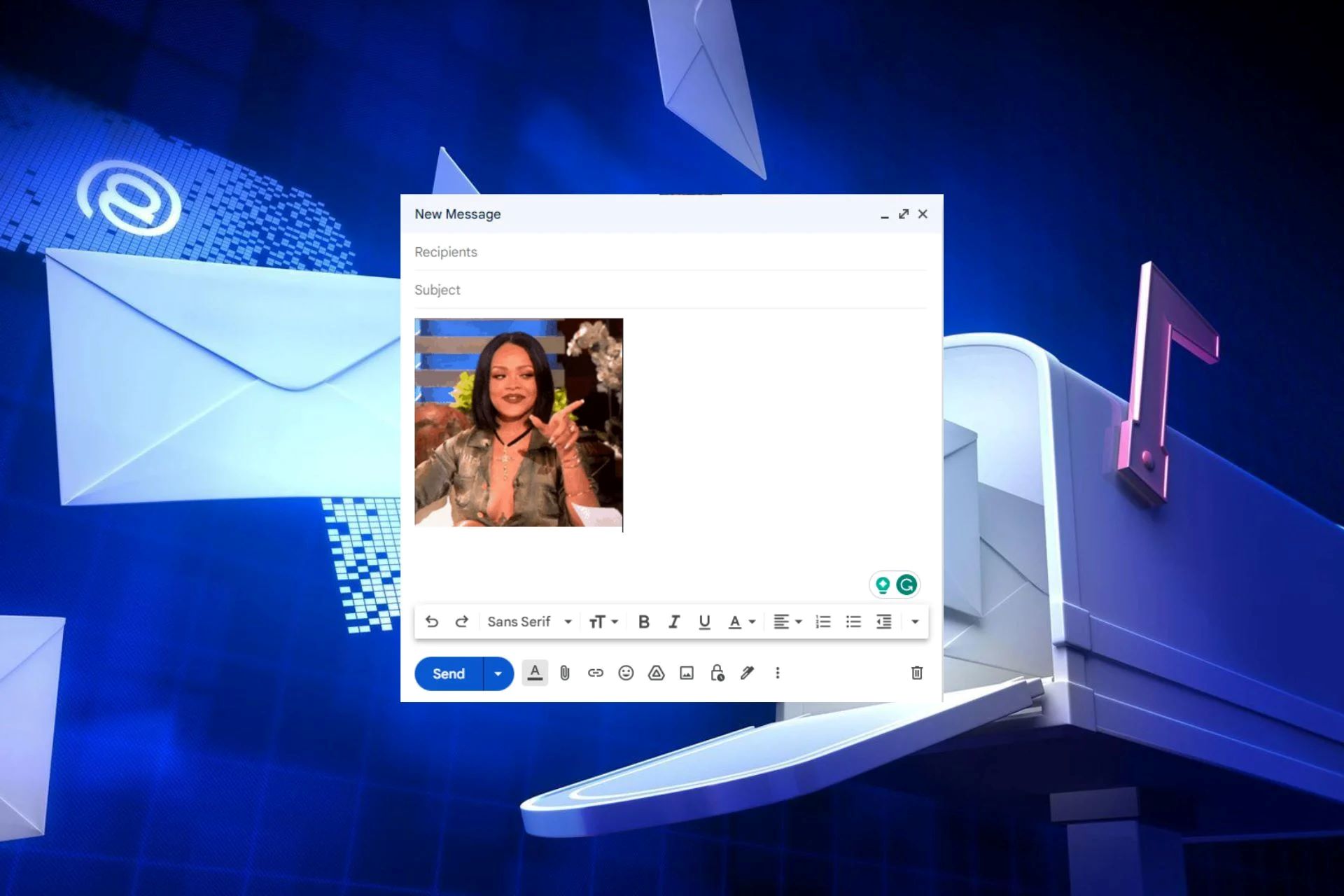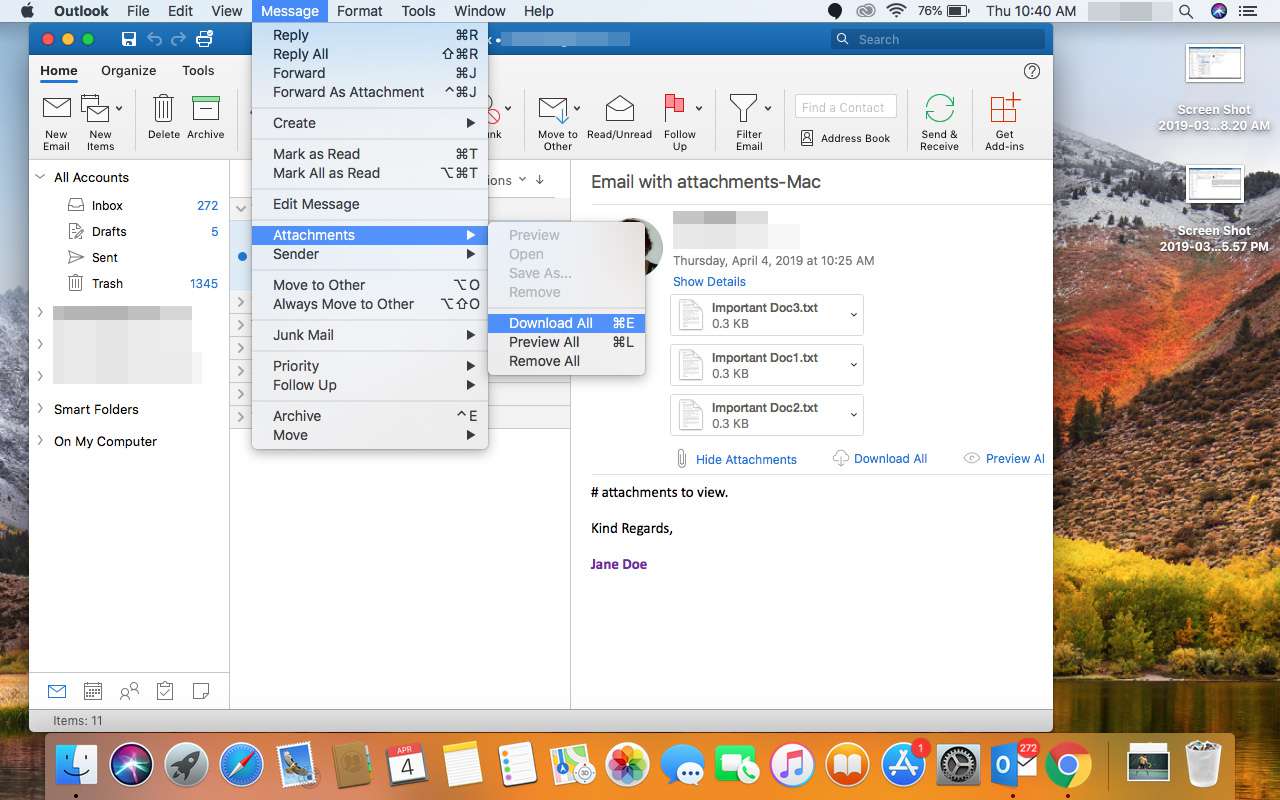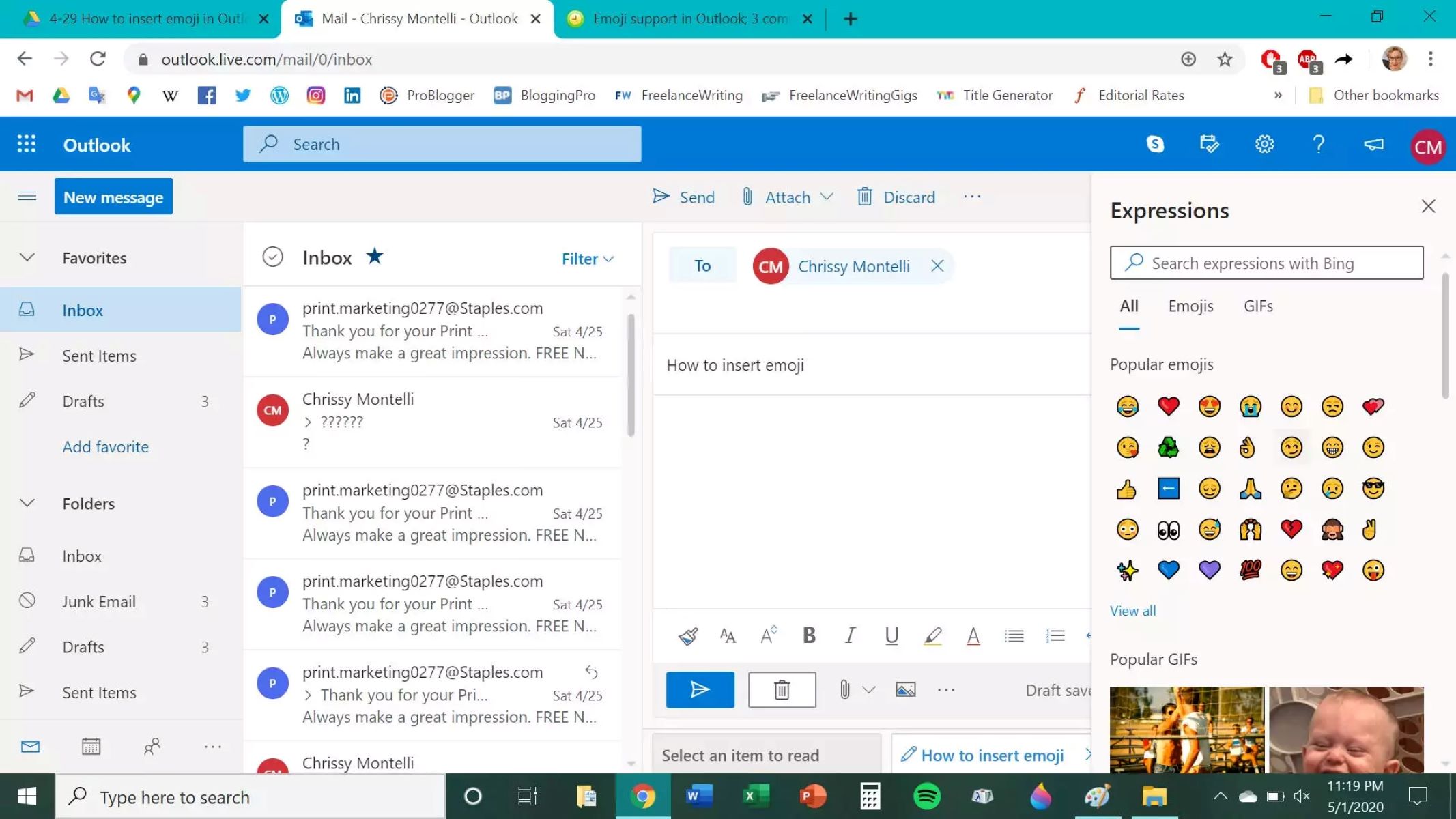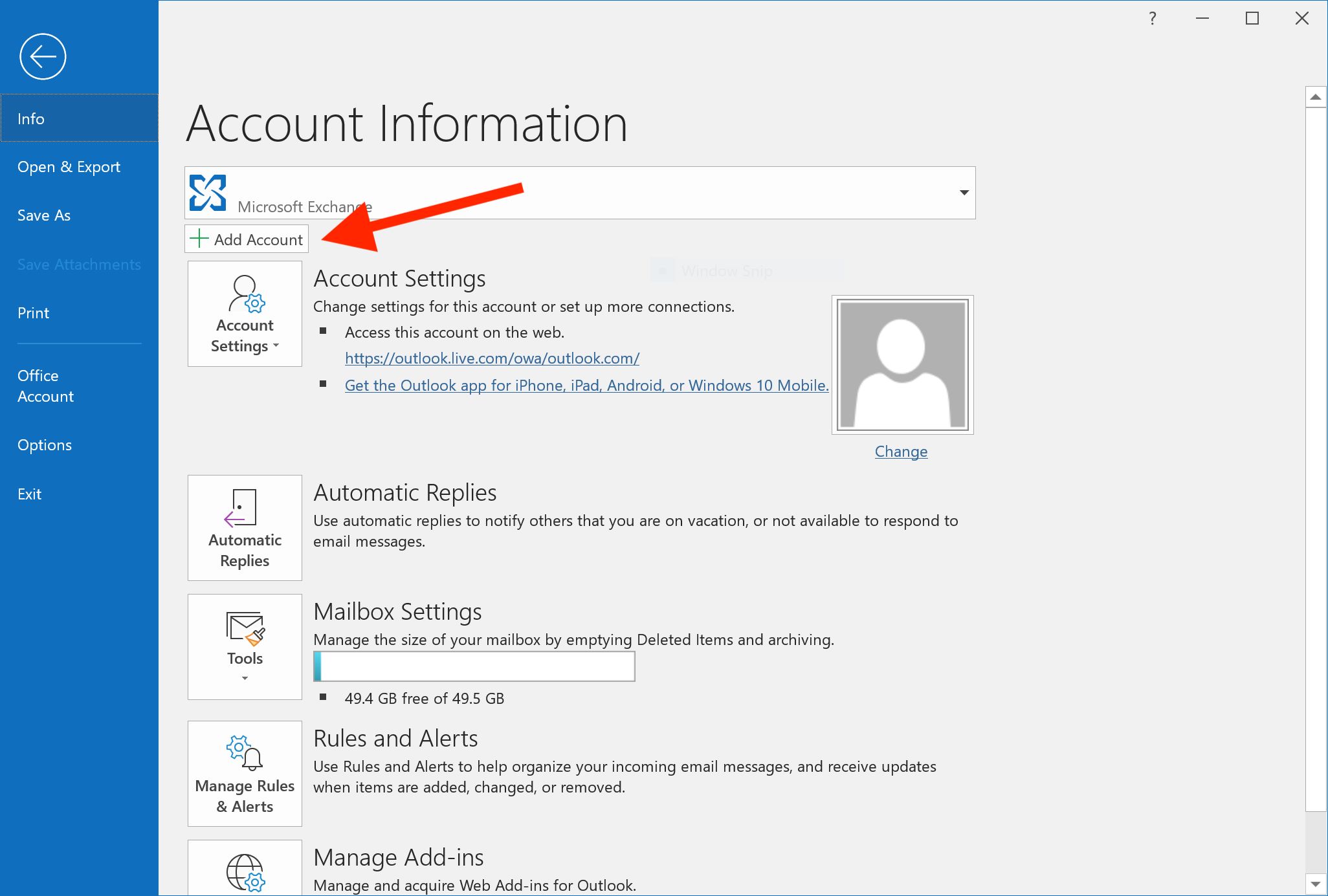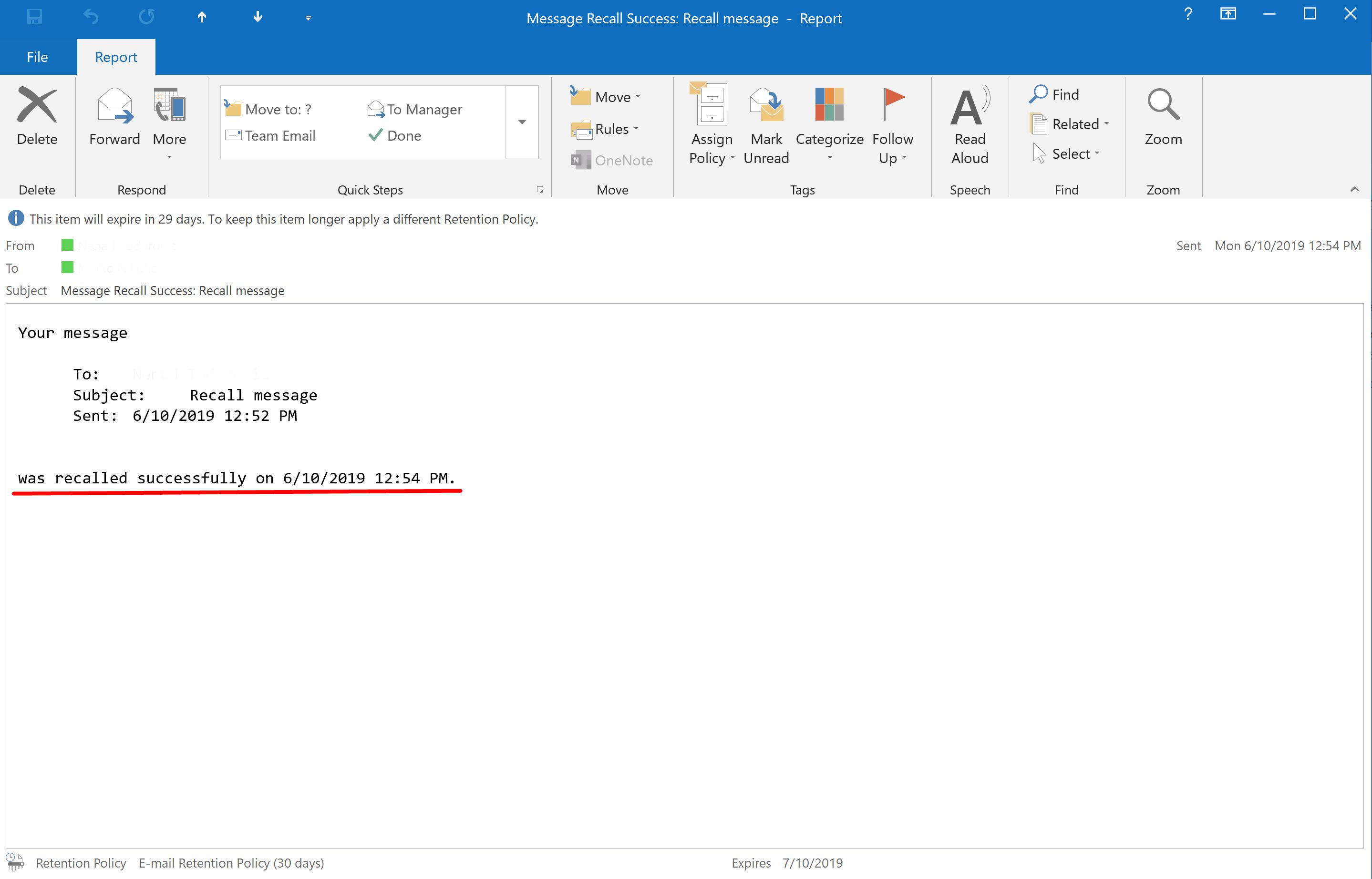Introduction
Searching for specific emails can be a time-consuming and frustrating task, especially when you have a cluttered inbox or receive numerous emails every day. Fortunately, Microsoft Outlook provides powerful search functionalities that can help you quickly find the emails you need. Whether you’re searching for a specific keyword, emails from a particular sender, or emails with attachments, Outlook offers various methods to make your search process more efficient.
In this article, we will explore different techniques for searching emails in Outlook and provide you with tips and tricks to optimize your search experience. From basic search functions to advanced filters and Boolean operators, we’ll cover everything you need to know to streamline your email search process.
With the help of Outlook”s robust search capabilities, you can find important emails, attachments, and conversations in no time. Say goodbye to endless scrolling and manual hunting through your inbox, and say hello to a more organized and productive email management system.
So let’s dive in and discover how to effectively search for emails in Outlook, ensuring that you never miss an important message again.
Search Basics in Outlook
Before delving into advanced search techniques, it’s essential to understand the basic search functions in Outlook. The search bar, located at the top of the Outlook window, allows you to enter keywords and phrases to find relevant emails.
To perform a basic search, simply type your search terms in the search bar and press Enter. Outlook will then display a list of emails that match your search criteria. By default, Outlook searches through the entire mailbox, including your inbox, sent items, and other folders. However, you can narrow down your search by specifying certain parameters.
If you want to search within a specific folder or mailbox, click on the dropdown arrow next to the search bar and select the desired location. This is particularly useful when you want to focus your search on a particular project or category.
By default, Outlook searches for emails that contain all the keywords you entered. However, you can refine your search by using different operators and modifiers. For example, placing your search terms within double quotation marks will search for an exact phrase. Using the OR operator between keywords will find emails that contain either of the terms. You can also exclude certain terms by using the minus sign (-).
Remember to specify the time period when searching for emails. Outlook allows you to search within a specific date range such as “last week,” “this month,” or you can enter a custom date range.
Another helpful feature of Outlook’s search is the ability to search by categories. If you’ve assigned categories to your emails, you can search for emails in a specific category by selecting the category from the dropdown next to the search bar.
By mastering these basic search functions, you can narrow down your search and locate specific emails more effectively. However, if you’re still struggling to find the email you’re looking for, it’s time to dig deeper into Outlook’s advanced search features.
Searching for Specific Keywords in Emails
One of the most common scenarios when searching for emails is looking for specific keywords or phrases within the email content. Outlook’s search functionality allows you to do just that, making it easier to locate the emails that contain the information you need.
To search for specific keywords, enter your search terms in the search bar as you would for a basic search. Outlook will then display a list of emails that contain the exact keyword or phrase you entered.
If you want to search for multiple keywords, you can separate them with the OR operator. For example, searching for “marketing OR sales” will return emails that contain either “marketing” or “sales.”
If you’re looking for an exact phrase, put the phrase in double quotation marks. For instance, searching for “annual report” will only show emails that have that exact phrase in the content.
Outlook also allows you to search for emails that do not contain certain keywords. To do this, use the minus sign (-) before the keyword you want to exclude. For example, searching for “marketing -promotions” will display emails that mention “marketing” but not “promotions.”
In addition to searching within the email content, Outlook’s search function also covers other email attributes such as subject lines, sender names, and recipients. This is particularly useful when you have limited information about an email but remember specific details like the subject or sender.
To search within a specific attribute, use the corresponding keyword or phrase followed by a colon. For example, searching for “subject:meeting” will display emails with “meeting” in the subject line.
By combining these search techniques, you can quickly refine your search and locate the exact emails you’re searching for based on specific keywords and attributes. This can save you valuable time and effort when dealing with a large volume of emails.
Searching for Emails from Specific Senders or Recipients
When you’re trying to find emails from specific senders or recipients, Outlook’s search capabilities can come in handy. Whether you’re looking for emails from a particular client, colleague, or contact, Outlook allows you to search for messages based on sender or recipient information.
To search for emails from a specific sender, enter the sender’s name or email address in the search bar. Outlook will then display a list of emails that were sent to you by that particular individual. This is particularly useful when you want to retrieve emails from a specific person, regardless of the subject or content.
If you’re searching for emails addressed to a specific recipient, use the “To” or “CC” fields in the search bar and enter the person’s name or email address. Outlook will filter the results to show only the emails that were sent directly to that individual or included them as a carbon copy.
It’s important to note that Outlook’s search function recognizes partial matches, so you don’t have to enter the complete sender or recipient name. For example, typing “john” will display emails from senders or recipients named John or with email addresses containing “john.”
If you want to combine the sender and recipient search criteria, you can use the “from” and “to” operators in the search bar. For example, searching for “from:john to:mary” will show emails sent from John to Mary.
Outlook also allows you to search for emails based on domain names. For example, if you want to find all emails sent from a specific company domain (e.g., “@example.com”), you can enter the domain in the search bar. This can be helpful when searching for emails from multiple individuals within an organization.
By utilizing these sender and recipient search functions, you can easily locate emails from specific individuals or domains. This can be especially valuable when you need to refer back to conversations or track communication with important contacts.
Searching for Emails with Attachments
Searching for emails with attachments is a common requirement, especially when you need to locate important files or documents. Outlook provides a straightforward way to search for emails that have attachments, allowing you to quickly find the information you’re looking for.
To search for emails with attachments, simply enter “hasattachments:yes” in the search bar. Outlook will then display a list of emails that contain attachments. This search query narrows down the results to show only the emails that have files or documents attached to them.
If you’re looking for emails with specific types of attachments, such as Word documents, PDFs, or images, you can further refine your search. For example, you can enter “hasattachments:yes filetype:pdf” to find emails that have PDF attachments.
Outlook also allows you to search for emails with attachments of a specific size. This can be useful when dealing with large files or when you remember the approximate file size. To search for emails with attachments within a specific size range, use the “size” operator followed by the file size. For example, you can search for “hasattachments:yes size:largerthan10MB” to find emails with attachments larger than 10MB.
In addition to searching for emails with attachments, Outlook provides a convenient preview feature. When you select an email with an attachment in the search results, a preview pane will display a thumbnail or preview of the attached file. This allows you to quickly identify the right email without having to open each one individually.
By utilizing these search techniques, you can efficiently locate emails that have attachments, enabling you to access important files and documents with ease. This can save you time and effort when searching for specific information or when you need to retrieve important attachments quickly.
Searching within Specific Folders or Mailboxes
When searching for emails, it’s often helpful to narrow down the scope of your search by focusing on specific folders or mailboxes. Outlook allows you to search within designated folders or even across multiple mailboxes, ensuring that you find the emails you need efficiently.
To search within a specific folder, first navigate to the folder you want to search in. This could be your inbox, sent items, a subfolder, or a custom folder you’ve created. Once you’re in the desired folder, enter your search terms in the search bar as you would for a basic search. Outlook will then only display results from the selected folder.
If you prefer to search within multiple folders simultaneously, use the “All Mailboxes” option. This option allows you to search across all the mailboxes that are currently added to your Outlook profile. Simply select “All Mailboxes” from the dropdown next to the search bar, enter your search terms, and Outlook will perform the search across all mailboxes.
Searching within specific folders or mailboxes can be especially useful when you’re working on a specific project or need to find emails related to a particular topic. By narrowing down the search scope, you can quickly locate the relevant emails without being overwhelmed by results from other folders or mailboxes.
Furthermore, you can use the “Current Folder” option to search within the folder you’re currently viewing, regardless of your folder navigation history. This option is helpful when you’ve accessed a specific folder through a search result or when you want to repeat a search within a particular folder without having to navigate again.
Whether you want to search within a specific folder, across multiple mailboxes, or limit your search to the current folder, Outlook’s search capabilities provide you with the flexibility to tailor your search to your specific needs. By utilizing these features, you can efficiently locate the emails you’re looking for without unnecessary distractions.
Using Advanced Search Filters
Outlook’s advanced search filters allow you to further refine your search and find emails that meet specific criteria. These filters help you narrow down your search results by focusing on specific attributes, such as the sender, subject, date, and more. By leveraging these advanced search filters, you can locate the emails you need with precision.
One of the commonly used filters is the “From” filter, which allows you to search for emails sent from specific senders. To use this filter, click on the search bar and select the “From” option from the dropdown menu. Enter the sender’s name or email address, and Outlook will display only the emails that match your criteria.
Similarly, you can use the “Subject” filter to search for emails with specific subject lines. This filter is handy when you remember the subject of an email but can’t recall other details. Select the “Subject” option from the search bar dropdown and enter the desired subject to retrieve matching emails.
The “Attachment” filter allows you to search for emails that have attachments. This is especially useful when you’re looking for emails with important files or documents attached. By selecting the “Attachment” filter, Outlook will display only the emails that contain attachments.
Other advanced search filters include the “Date” filter, which allows you to specify a range of dates for your search, and the “Folder” filter, which restricts the search to a specific folder or mailbox. These filters come in handy when you need to narrow down your search based on specific timeframes or within a particular location.
When using multiple filters, you can combine them to refine your search further. For example, you can search for emails from a specific sender within a defined date range by using both the “From” and “Date” filters together.
By leveraging these advanced search filters, you can expedite the process of finding specific emails in Outlook. These powerful search options save you time and effort by focusing on the precise attributes that matter most to you.
Using Boolean Operators in Outlook Search
Outlook search offers the flexibility of using Boolean operators to create more refined and complex search queries. By combining keywords, phrases, and operators, you can create powerful search queries that precisely match your search criteria.
The three primary Boolean operators that can be used in Outlook search are AND, OR, and NOT.
The AND operator is used to search for emails that contain all the specified keywords. For example, if you search for “marketing AND sales,” Outlook will display only the emails that mention both “marketing” and “sales” in their subject, content, or other relevant fields.
The OR operator is used to search for emails that contain at least one of the specified keywords. For example, if you search for “marketing OR sales,” Outlook will show the emails that mention either “marketing” or “sales.” This is particularly useful when you want to broaden your search to include similar terms or alternatives.
The NOT operator allows you to exclude specific keywords or terms from your search results. For example, if you search for “marketing NOT promotions,” Outlook will display emails that mention “marketing” but does not have the term “promotions” in them. This is useful when you want to filter out specific topics or focus on a particular aspect.
You can combine these operators to create more complex search queries. For example, if you want to find emails related to marketing but exclude any promotions, you can use the query “marketing AND NOT promotions.”
It’s important to note that when using Boolean operators, it’s recommended to use uppercase letters (AND, OR, NOT) for better readability and to distinguish them from regular search terms.
By utilizing Boolean operators in your Outlook search queries, you can precisely tailor your searches to match your desired criteria. This advanced search functionality allows for more specific and targeted results, improving your search efficiency and productivity.
Additional Tips and Tricks for Efficient Searching
Searching for emails can sometimes be a daunting task, especially when dealing with a large number of messages. However, with a few additional tips and tricks, you can streamline your searching process and find the emails you need more efficiently. Here are some helpful suggestions:
1. Use search shortcuts: Outlook offers several handy search shortcuts to speed up your search. For example, you can use “Ctrl + E” to move the cursor to the search bar instantly, or “Ctrl + Shift + F” to open the Advanced Find window for more complex searches.
2. Refine your search with wildcards: If you’re unsure about the precise spelling or want to search for variations of a keyword, you can use wildcards. The question mark (?) represents a single character, while the asterisk (*) represents multiple characters. For example, searching for “m?rket” will return results for “market” and “mirket.”
3. Utilize search folders: Search folders in Outlook allow you to save specific search queries as virtual folders. This means you can quickly access a folder that contains emails matching certain criteria without having to perform the search repeatedly.
4. Save frequently used searches: If you frequently search for specific information or use complex search queries, consider saving those searches as “Search Folders” or “Search Favourites.” This allows you to access them easily and eliminates the need to recreate the search each time.
5. Take advantage of search filters in the ribbon: Outlook’s ribbon interface offers various filters that can help narrow down your search. Filters such as “Unread,” “Follow Up,” or “Flagged” allow you to quickly locate emails based on specific criteria.
6. Combine search fields: Outlook’s search allows you to combine different search fields to create more specific queries. For example, you can search for emails with specific keywords in the subject line, sent by a specific sender, and received within a specific timeframe.
7. Regularly clean up your mailbox: Performing routine mailbox cleanup, including archiving or deleting unnecessary emails, can significantly enhance the speed and efficiency of your searches. A clutter-free mailbox makes it easier to pinpoint important messages.
By implementing these tips and tricks, you can make the most of Outlook’s search capabilities and improve your overall email management experience. These practices will help you quickly locate relevant emails, increase productivity, and save valuable time.
Conclusion
Efficiently searching for emails in Outlook is crucial for staying organized and productive in today’s digital world. With the powerful search functionalities and advanced filters available in Outlook, finding specific emails, attachments, or messages from particular senders or recipients becomes a breeze.
In this article, we’ve explored various techniques and tips to enhance your Outlook search experience. We started with understanding the basic search functions in Outlook, including searching within specific folders or mailboxes and utilizing advanced search filters. We also learned how to search for emails based on specific keywords, phrases, and Boolean operators.
Furthermore, we discussed the importance of searching for emails from specific senders or recipients and how to locate emails with attachments. We also provided additional tips and tricks to optimize your search, such as utilizing search shortcuts, saving frequently used searches, and making use of search folders and filters.
By implementing these strategies, you can save time, boost productivity, and efficiently manage your emails in Outlook. Never again will you struggle to find important messages or waste valuable minutes scrolling through an overwhelming inbox.
So, embrace the power of Outlook’s search capabilities and take control of your email management. With a little practice and these valuable techniques, you’ll become a master at finding the emails you need, precisely when you need them.







